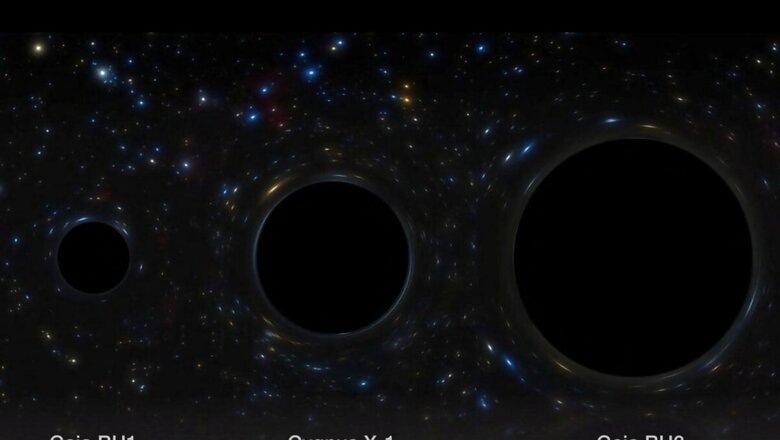
views
Astronomers from the National Centre for Scientific Research (CNRS) at the Observatoire de Paris accidentally may have discovered the largest stellar black hole in the Milky Way. Gaia BH3, with a mass 33 times that of the Sun, lies in the Aquila constellation, some 2,000 light years away from Earth, which is relatively close when it comes to cosmic distance.
Pasquale Panuzzo of the CNRS told news outlets that he discovered black hole Gaia BH3 “by chance” from data collected by the European Space Agency’s Gaia mission. The Gaia mission is a European Space Agency project aiming to create a detailed 3D map of the Milky Way galaxy, measuring positions and motions of over a billion stars.
The telescope that the project uses gives precise position of stars in the sky allowing researchers to characterise their orbits and measure the mass of the star’s invisible companion
The invisible companion referred to here is the black hole, orbiting around the observed star.
Using observations from on-the-ground telescopes it was further discovered that the mass of Gaia BH3 is far greater than the stellar black holes already in the Milky Way.
“This black hole is not only very massive, it is also very peculiar in many aspects. It is really something we never expected to see. No one was expecting to find a high-mass black hole lurking nearby, undetected so far. This is the kind of discovery you make once in your research life,” Panuzzo said in a press release.
The stellar black hole was discovered when scientists spotted a “wobbling” motion on the companion star that was orbiting it.
Black holes are extraordinarily dense objects. The gravitational pull is so strong that even light cannot escape, which makes it harder to spot.
It was discovered because it created a huge stellar census as it caused a wobbling motion in its companion star.
A stellar census refers to a comprehensive survey or inventory of the stars within a particular region of space or galaxy.
Stellar Black Holes vs Supermassive Black Holes
Black holes that form following the collapse of a single star are called stellar black holes. Gaia BH3 is the largest-known stellar black hole, according to astronomer and study co-author Tsevi Mazeh of the Tel Aviv University in Israel.
Stellar black holes are dwarfed in size by the supermassive black holes inhabiting the centre of most galaxies.
One such black hole called Sagittarius A*, or Sgr A*, is located at the heart of the Milky Way. It possesses 4 million times the mass of our sun and is located about 26,000 light-years from Earth.
There is another type of black hole, called the supermassive black hole, and it is still unclear how they are formed. They have been detected in distant galaxies via gravitational waves.
Gaia BH3, and its companion are travelling within the galaxy in the opposite direction of how stars typically orbit in the Milky Way.
The progenitor star of Gaia BH3 consisted predominantly of hydrogen and helium, reflecting the low metallicity characteristic of early universe stars. It likely formed around 2 billion years after the Big Bang.
Researchers said that Gaia BH3 probably formed after the death of the star which was more than 40 times as massive as the sun.
“Progenitor star” refers to the star that existed before a specific astronomical event, such as a supernova or the formation of a black hole.
“We could see a star a little smaller than the Sun (around 75 percent of its mass) and brighter, that revolved around an invisible companion,” Panuzzo said.
The BH3 is a “dormant” black hole and is far away from its companion star. Hence it cannot strip its companion star of its matter and therefore emits no X-rays — making it difficult to detect.
Gaia’s telescope identified the first two inactive black holes (Gaia BH1 and Gaia BH2) in the Milky Way.
Gaia has been operating 1.5 million kilometres from Earth for the past 10 years and in 2022 delivered a 3D map of the positions and motions of more than 1.8 billion stars.
(with inputs from Reuters and AFP)















Comments
0 comment